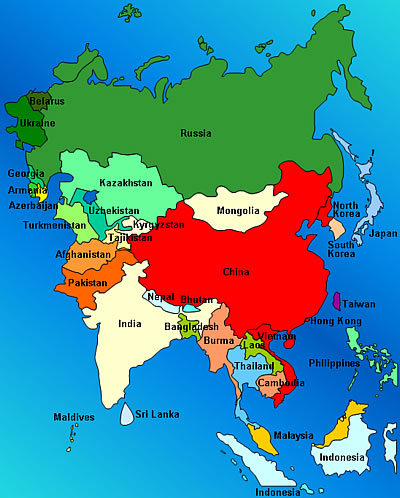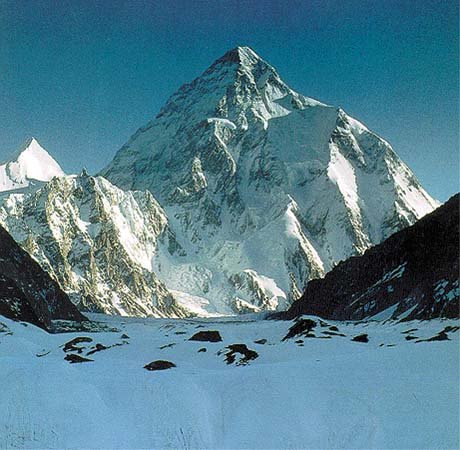The Geography of India
Overview of the Geography of India
The geography of India is unique in that India contains many diverse geological features and different climates. These features and climates are not generally found in one country. India is located in South Asia and its location coordinates are north of the equator at 8°4' and 37°6' north latitude, and 68°7' and 97°25' east longitude. Because of its location and its shape, it has areas of cold mountainous climate, areas of mediterranean climate, areas of desert climate, and areas of forrest too.
India lies completely on what is called the Indian Plate. The Indian plate is the northern portion of the Indio-Australian Plate, which is a huge tectonic plate. A tectonic plate is a massive slab of solid rock that is made up of Earth's lithosphere, which consists of Earth's crust and its upper mantle. The Indian Plate encompasses the India, Australia and their surrounding oceans.
The Size of the Country of India
India is the world's seventh largest country, in terms of its geographical size. India has a massive land area of 1,269,219 square miles. It measures 1,997 miles from north to south, and 1,860 miles from east to west. The perimeter of India's coastline alone measures an astounding 4,671 miles. Approximately the lower two-thirds of India is surrounded by bodies of water. These important bodies of water and the water systems of India have enabled it to sustain an enormous amount of life through historical civilizations.
One of the amazing facts about India is that it has the world's largest population, which is a more recent determination. Not long ago, China held the worlds largest population, but India has now surpassed China as the most populous country in the world. You can learn more about the population of India here.
What is Included in India's Land Geography?
India's land geography includes the Himalayan Mountain Range to the North, the Punjab Plains and the Thar Desert to the west, where India borders Pakistan. As mentioned before, most of India has a coastline, so there is a a lot of beach area too.
The Chin and Kachin Hills lie in the far Northeast of India, and the Khasi and Mizo hills are located in the Indo-Gangetic Plain, which runs East to West in the Northern region of India. The Ganges river basically forms the Indo-Gangetic Plain. The Ganges-Brahmaputra River System runs through most of Northern, Eastern, and Central India. Most of southern India is in a region called the Deccan Plateau, and the western portion is occupied by the Thar Desert.
The highest point in India is located in the Kashmir region. It is located in a place called Gilgit-Baltistan. The name of this high point is K2. It reaches 28,251 ft into the air! It is breathtakingly beautiful and it features snow and a cooler climate. If you are a mountain climber and travel to India, there are many opportunities to climb gorgeous mountain ranges with or without guided tours.
Above is a picture of K2, India's highest point!
In addition to having an interesting geographic land layout, India's climate is also very unique. It ranges from hot equatorial conditions in the southern regions to alpine conditions in the Himalayas. Let us not forget that the That Desert region features dryer conditions that can be cold or very hot, depending on the weather and time of the year.
The Geography of India and its Affect on Culture and History
The geography of India actually played a major role in forming aspects of its culture and its history. For example, people living in regions located closer to the ocean tend to eat more fish and utilize the oceans and they resources. People who live in the more Mediterranean climates have also worn different clothing than those living in the mountainous tundra regions. The culture and traditions of people also differ based upon what region or state of India they live in.
In addition, Indian people native to the more southern regions tend to have darker skin pigment than those native to the northern regions. This is in part due to the fact that during India's ancient history, the Aryans invaded India from the north and mixed culturally with these people in the Indus Valley Civilizations. India was also under British Rule for a long time, and that may have further influenced this.
During ancient times, these nomads traveled by foot and therefore could not enter India through the south because the south was surrounded by the oceans mentioned earlier. So, the north was their point of entry. It's clear that the geography of India had influence over the culture seen in India today.
Leave Geography of India to explore the states of India.
Find out what it's like in India today!
Discover more of India from our homepage.




